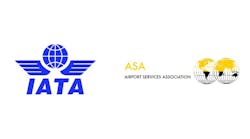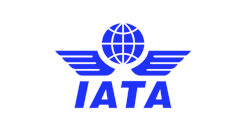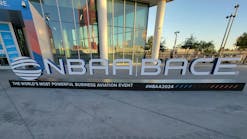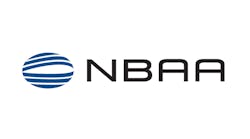Duty Bound: Importing Aircraft Parts into the United States
The United States has a positive balance of trade in aviation maintenance services. That means a lot of aviation products and articles come into the country from abroad for repair. The good news is that under the Agreement on Trade in Civil Aircraft (CAA), many civil aviation products and parts are exempt from import duties, which (in theory) can reduce costs of doing business. The bad news is that confusion about the rules has forced maintenance providers to devote considerable resources to navigating Customs regulations and dealing with conflicting views of exporters, importers, and government agents.
One major question has been whether the part being imported for maintenance must be airworthy at the time to qualify for duty-free treatment. ARSA’s view is that under the CAA and applicable U.S. rules, airworthiness isn’t a criterion. To understand why, you need to know a little bit about the legal landscape in this area.
First a Treaty, Then a Regulation
The CAA is part of the Tokyo Round of international trade negotiations; it entered into force on Jan. 1, 1980. The signatory countries (including the United States) agreed to eliminate customs duties on articles used in civil aircraft and aircraft manufacture, repair, maintenance, rebuilding, modification, or conversion. The agreement also eliminated duties on civil aircraft maintenance activities.
The CAA covers civil aviation products and articles. The term “civil aircraft” is defined in the agreement by negation, that is, to mean all aircraft other than military aircraft. In practical terms, aircraft operated by armed forces and national police forces are not covered by the agreement.
The Harmonized Tariff Schedule of the United States (HTSUS) is maintained by the U.S. International Trade Commission (ITC). It is the primary resource for determining the proper tariff (customs duty) classification for imported goods. General Note 6 of the HTSUS prescribes what must be done to enter products duty-free under the CAA and defines the term “civil aircraft” for purposes of the tariff schedule.
The primary applicable Customs regulation is 19 CFR §10.183, which explains, among other things, what qualifies for the exemption, how to claim duty-free treatment, and the required certifications and documentation that must be maintained. The rule applies to aircraft, aircraft engines, and ground flight simulators, including related parts, components, and subassemblies, that qualify as civil aircraft under General Note 6(b) of the HTSUS.
To qualify for duty-free treatment the item must be used as original or replacement equipment in the design, development, testing, evaluation, manufacture, repair, maintenance, rebuilding, modification, or conversion of aircraft. The article must also be:
(1) Manufactured or operated pursuant to a certificate issued by the FAA under 49 U.S.C. §44704 or pursuant to the approval of the airworthiness authority in the country of exportation if that approval is recognized by the FAA as an acceptable substitute for the FAA certificate; or
(2) Covered by an application for such a certificate, submitted to and accepted by the FAA, filed by an existing type and production certificate holder pursuant to 49 U.S.C. §44702 and FAA regulations; or
(3) Covered by an application for such approval or certificate which will be submitted in the future by an existing type and production certificate holder, pending the completion of design or other technical requirements stipulated by the FAA (applicable only to the quantities of parts, components, and subassemblies as are required to meet the stipulation).
Airworthy or Not?
There is no requirement in the regulation or HTSUS that the part be airworthy and Customs rulings support that position. For example, in 2005 Customs examined the tariff exemption for parts removed from a foreign aircraft sent to the United States for repair. The government concluded: “if the parts at issue are either FAA certified or approved for use on a civil aircraft and are imported for repair to be used in the same manner, then the importation of the parts would qualify for duty-free entry under the Civil Aircraft Agreement.” The Service ultimately held that, “[a] civil aircraft part, removed from a foreign aircraft … and imported for repair, is eligible for duty-free treatment under the Civil Aircraft Agreement if the part is either FAA certified or approved for use on a civil aircraft and will be used in the same manner subsequent to repair.”
Documenting and Paperwork
19 CFR §10.183 provides details on how to claim, certify, and document duty-free admissions under the CAA. When claiming duty-free treatment on the entry summary, the importer is deemed to have certified that the merchandise does in fact qualify under paragraphs (a) or (b) of the regulation. It is therefore vital that the importer have a sound basis for making that certification. The rules also require that a claim for duty-free treatment be supported by documentation. The documentation does not need to be filed along with the entry summary, but it must be maintained in accordance with the HTSUS and Customs recordkeeping requirements (found at 19 CFR Part 163).
Resources for Industry
Confusion about the rules means wasted time and money. That’s why ARSA is working with government and industry stakeholders to resolve questions and developing guidance to encourage consistent compliance and enforcement. Keep checking www.arsa.org/regulatory/customs for more information.
Christian A. Klein is the managing member of Obadal, Filler, MacLeod & Klein, P.L.C. overseeing the firm’s policy advocacy practice. He represents trade associations as a registered federal lobbyist and provides strategic communications and legal counsel services to clients. He is executive vice president of the Aeronautical Repair Station Association and represents the American Concrete Pressure Pipe Association.





